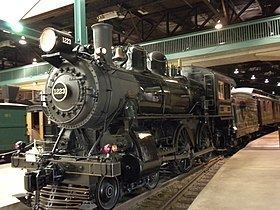Power type Steam Driver dia. 68 in (1,727 mm) Adhesive weight 98,500 lb (44,700 kg) Builder Altoona Works Build date 8 November 1905 | Serial number 1399 Length 62 ft 7 in (19 m) Area 404.7 m² Added to NRHP 17 December 1979 Configuration 4-4-0 | |
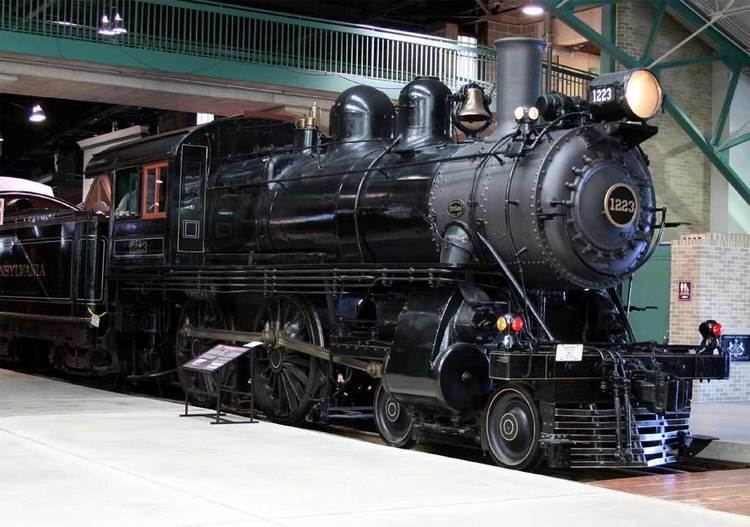 | ||
Gauge 4 ft 8 ⁄2 in (1,435 mm) Current owner Pennsylvania Historical and Museum Commission Operators Pennsylvania Railroad, Tuckerton Railroad, Strasburg Rail Road | ||
Strasburg railroad with prr 1223 june 1988
Pennsylvania Railroad 1223 is a 4-4-0 "American" type steam locomotive built in 1905 for the Pennsylvania Railroad by the railroad's own Altoona Works for passenger service. After being retired from active service, the locomotive ran excursion trains on the Strasburg Railroad in Strasburg, Pennsylvania from 1965 to 1989 when it was removed from service requiring firebox repairs. Currently the engine is on static display at the Railroad Museum of Pennsylvania in Strasburg. It was listed on the National Register of Historic Places in 1979. The 1223 is the only surviving example of the Pennsylvania Railroad D16sb class.
Contents
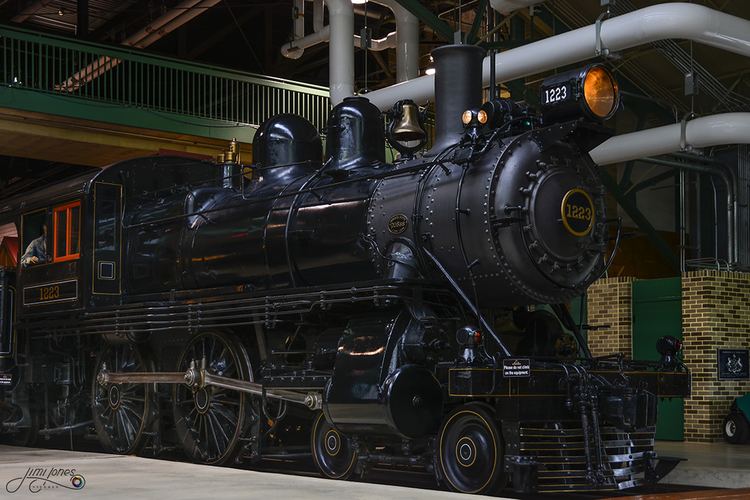
History of class
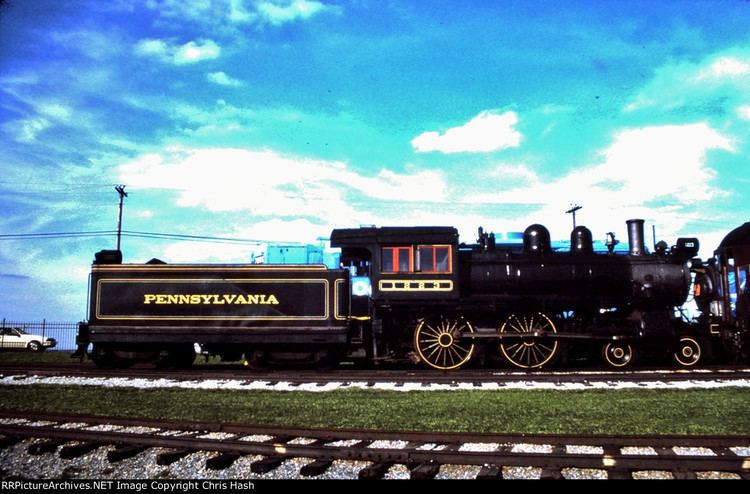
The class D16 locomotives of the Pennsylvania Railroad were the most modern of a long history of 4-4-0 type steam locomotives that the railroad used. The 1223 was home built by the railroad at its Juniata Shops in Altoona, Pennsylvania, in 1905. As built it was a high speed passenger engine with tall driving wheels. However, the 4-4-0 type, long the mainstay of American passenger and freight service, was already becoming outmoded when the 1223 was built, being superseded by ever-larger engines. The Pennsy itself was pioneering steel passenger cars, which the public soon demanded for the implied increases in safety. The 1223 was eventually rebuilt with smaller driving wheels for local freight service, having been replaced on passenger trains by engines like the E6 Atlantics and K4 Pacifics. It was modernized as well, receiving superheaters [the "s" in D-16sb), piston valves, an electric headlight, and other improvements.
Later years
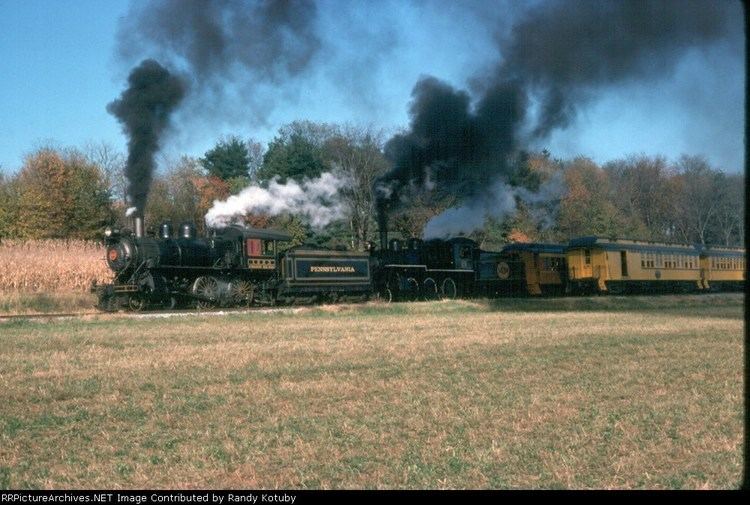
By the year 1940, most railroads had forgotten about the 4-4-0, but the Pennsy, the Boston and Maine, and Canadian Pacific Railway, among others, were still using them. On the PRR in 1941 there were three (No. 1035, 1223, 5079) working in Delaware, Maryland, and Virginia on secondary branches of the PRR's Delmarva Line. They were leased to the Baltimore & Eastern and based in Easton, MD. No. 1223 was scheduled for scrapping when an officer of the Pennsylvania RR noticed her and ordered her renovation to almost original condition in 1937. Her sister 5079 remained in service in Delmarva into the 1950's and may have been the last 4-4-0 in service in the USA. Of the three 1223 was selected for display at a number of railroad fairs in the 1930s, 1940s, and 1950s, and eventual preservation. The engine was also used in the film Hello, Dolly in 1969. For years the engine was stored at the roundhouse in Northumberland, Pennsylvania.
Strasburg Rail Road
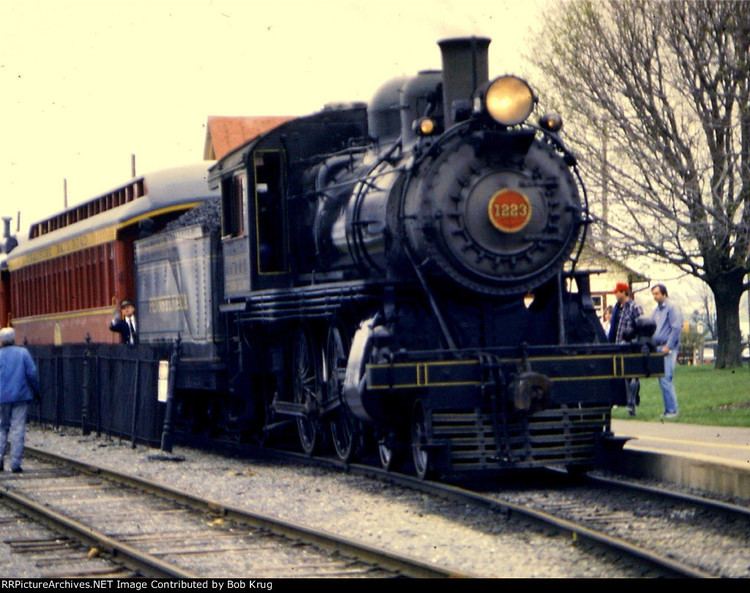
In 1965 the Strasburg Rail Road in Strasburg, Pennsylvania, leased No. 1223 from the Pennsylvania Railroad and restored it to operating condition. In the 1970s and 1980s, the 1223 pulled the Strasburg's regular tourist trains, as well as occasional offline excursion trips, often running in tandem with PRR 7002. During the 1970s, the Penn Central had transferred the Pennsylvania Railroad historical collection to the State of Pennsylvania, which placed much of the collection on display at the newly built Railroad Museum of Pennsylvania, just across the road from the Strasburg Rail Road's depot complex. As such, ownership of the 1223, as well as the 7002, was turned over to the museum, from which the Strasburg continued to lease and operate both engines. In 1989, Strasburg's newly acquired ultrasound device revealed that the firebox walls of both 1223 and 7002 were not thick enough to comply with the updated Federal Railroad Administration regulations, thus deeming the engines unsafe for operation. The Strasburg declined to make the necessary repairs as the engines did not belong to them. Moreover, the Railroad Museum of Pennsylvania preferred to keep the original fabric of their equipment intact. Thus, Strasburg withdrew the engines from service at the end of the 1989 season, and allowed their leases to expire, at which time they were placed on display inside the museum, where they currently remain.
